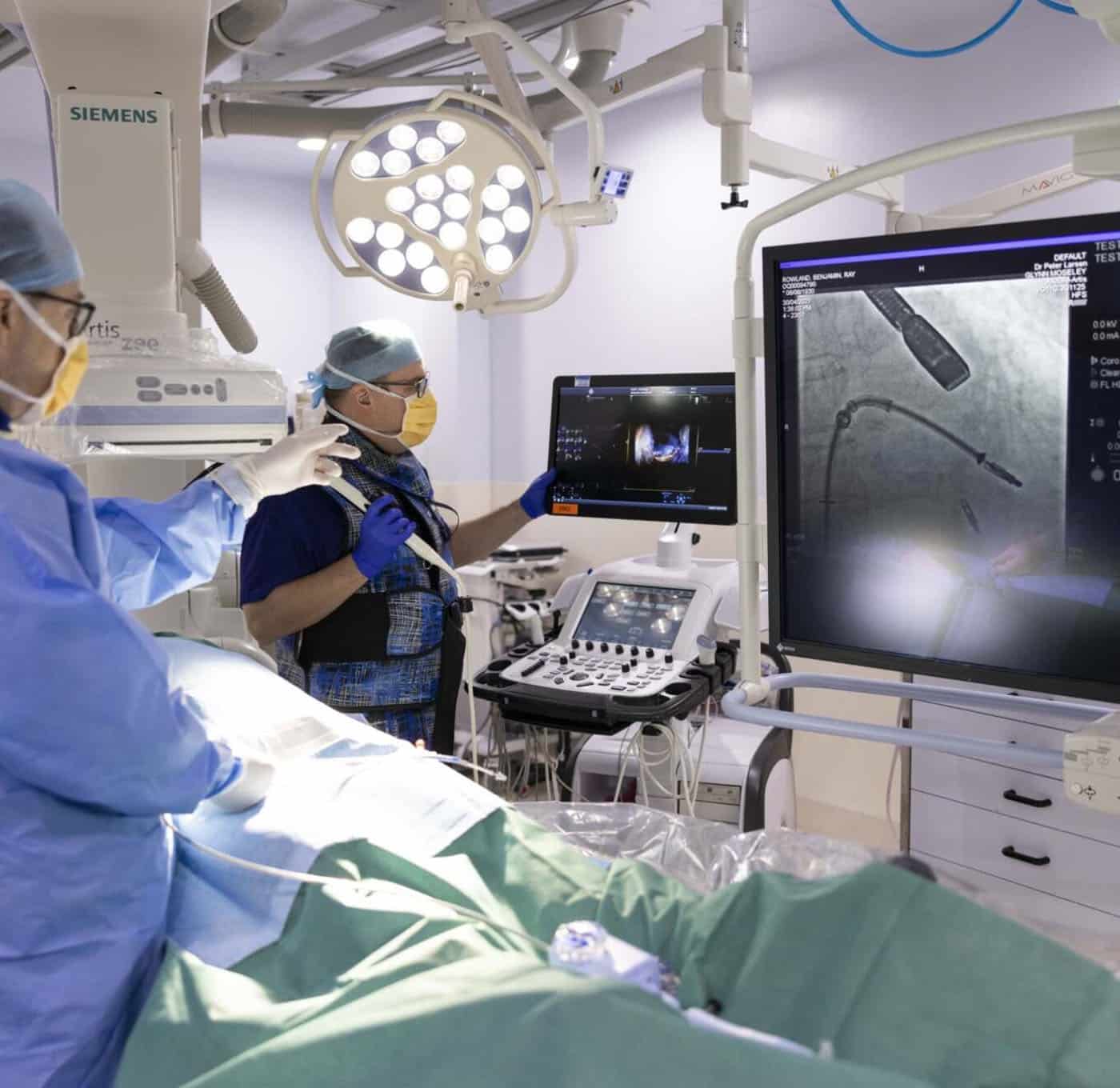Percutaneous atrial septal defect closure
An atrial septal defect is a hole between the left atrium and right atrium of your heart. This procedure repairs the hole using a permanent artificial device.

Your doctor has recommended you undergo a procedure called an atrial septal defect (ASD) closure.
You might not have heard of this medical term before now and may be feeling unsure about the nature of the procedure.
This information sheet will outline what the procedure is and what preparations and risks are involved.
After you read this information sheet, you might still have questions. If you do, please contact the team at Heart HQ. We’re here to help.
What’s an ASD repair?
Normally blood does not flow directly between the left and right chambers of your heart. An ASD is a hole between the upper left chamber (called the left atrium) and the upper right chamber (called the right atrium) of your heart.
An ASD causes an abnormal increase in blood flow in the right side of the heart. Because it is receiving so much extra blood, the right side of the heart does more than its normal share of the work. This can make you feel tired, have trouble breathing and it can even shorten your lifespan.
How does it work?
An intravenous line (IV) will be placed into a vein in your arm. This is for the medical team to administer medication throughout your procedure. You will receive an injection of local anaesthetic before a catheter (a very fine tube) is placed into a vein in your groin or wrist. Sometimes a sedative will also be given.
Your doctor will repair the hole using a permanent artificial device. This device is called a septal occluder and acts as a plug. It will be passed through the catheter into your heart and placed in the defect.
Once your doctor is happy with the placement, the catheter will be removed and the entry site will be closed.
Further procedures
If your doctor has advised you to have an ASD closure, you may also require any of the following:
Echocardiogram—an ultrasound that uses soundwaves to form a picture of your heart (see separate information sheet).
Right Heart Catheter—a soft balloon ‘catheter’ that records the pressure in the lungs and heart (see separate information sheet).
Angiogram—a catheter that is passed into each coronary artery while a series of video pictures are taken using x-rays and a contrast medium (x-ray dye). This measures the size of the heart and how well it is pumping (see separate information sheet).
What kind of risks are associated with this procedure?
Any kind of procedure carries some element of risk, often very small and rare.
Your doctor has balanced the benefits and risks of carrying out the test against the benefits and risks of not proceeding. If your doctor has recommended this procedure, they believe there is benefit to you going ahead.
It’s important you understand the risks involved so you can make an informed decision.
Here are the most commonly reported risks and complications associated with an ASD closure.
Common risks and complications (more than 5% of cases)
- Minor bruising at the puncture site
- A higher lifetime risk from exposure to radiation
- Abnormal heart rhythm that continues for a long time—this may need an electric shock to correct
- Major bruising and swelling (haematoma)
- Bleeding around catheter site
- High or low blood pressure
- Sore throat from the anaesthetic tube or echo probe
Rare risks and complications (less than 1% of cases)
- Stroke or transient ischaemic attack (TIA)—this may cause long term disability
- Incomplete closure of the defect—this may require surgery
- An allergic reaction to the x-ray dye
- Embolism—a blood clot may form and break off from the catheter which will be treated with blood thinning medication
- Fever, headache or migraine
- Injury to the artery, veins or nerves in the groin or neck—this may require surgery
- Tear of oesophagus, vein or heart (from the camera)—this may be life threatening and may require surgery
- Clots in the leg (deep vein thrombosis or DVT) with pain and swelling—rarely, part of a clot may break off and go into the lungs
- Device infection—this will need open heart surgery and antibiotics
- Dislodgement of the septal occluder which may require open heart surgery to repair
- Puncture of the heart with a collection of blood around the heart—this will require surgery to repair
- Death as a result of this procedure is rare
Percutaneous atrial septal defect closure info sheet